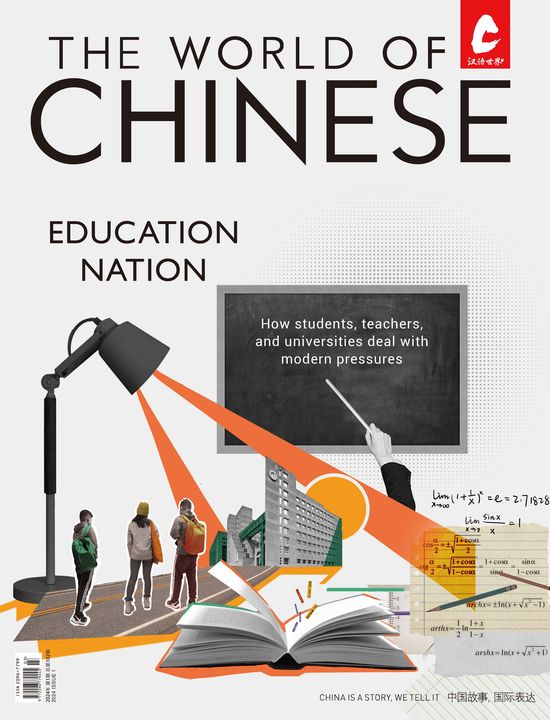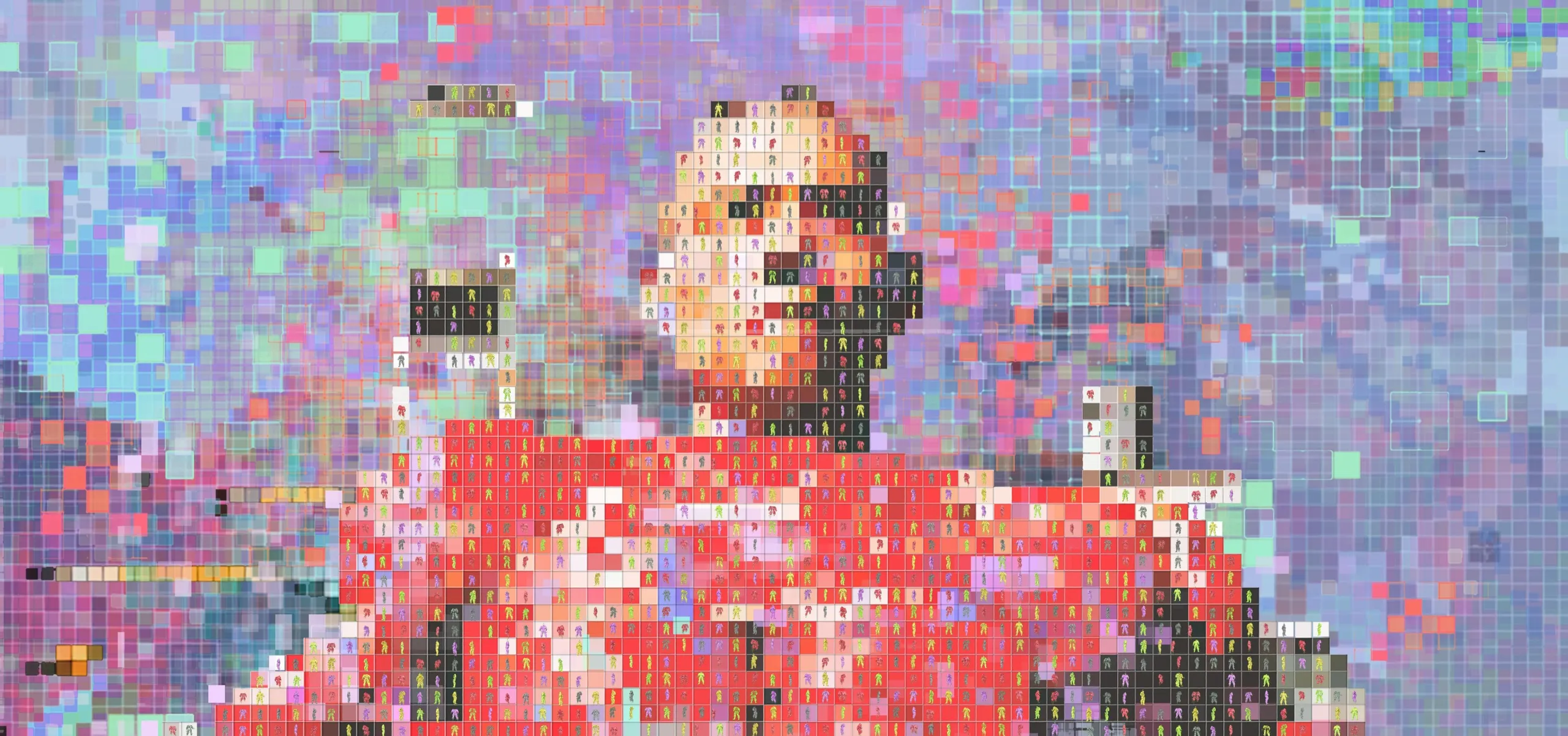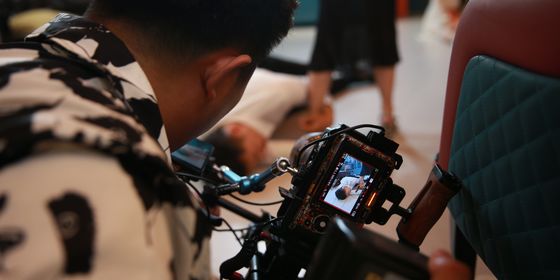In the Chinese NFT world, reputation and connections prove just as important as in the offline traditional art scene
The screen cracks to the sound of exploding gunpowder. A video montage plays, showing canvases facing downward and weighted with stones, bucking like mules as explosives are set off underneath them.
This is the work of Cai Guoqiang, a New York-based Chinese artist famous for using fireworks and gunpowder as a medium, with enough clout to earn his work some airtime in the opening ceremony of the 2008 Olympic Games in Beijing. This video, titled Transient Eternity—101 Ignitions of Gunpowder Paintings, feels more like a behind-the-scenes documentary than actual art. Indeed, it’s a set of shots of Cai making another artwork, a series of canvases titled “Individual’s Journey Through Western Art History.”
But it sold through production studio and NFT sales platform TRLab for 2.5 million US dollars as a Non-Fungible Token (NFT) in July 2021, coveted by influential bidders like Justin Sun, CEO of the digital trading platform TRON.
The sale came at a time, says Audrey Ou, co-founder and CEO of TRLab, when many were keen to experiment with the possibilities of NFTs. “For Cai’s many fans, followers, and collectors, it was an immensely exciting opportunity,” she tells TWOC, with the latest crypto-technology capturing art “designed to exist in ephemeral form.”
By contrast, newer Chinese artists still struggle to sell at auctions at high prices. “I don’t think they can do that if they have less of a reputation,” Chen Qiji, a crypto-artist who works under the name of Ellwood, tells TWOC. Despite having worked in field for the past two years and painstakingly coded his own crypto-art, Ellwood has only sold 0.049 ETH (Ether, a popular crypto-currency), converting to 88.88 US dollars, according to the database CryptoArt.
Ellwood is part of a community of so-called “crypto-native” artists, who typically have a background in computer science and work solely within the world of NFTs, coding, and digital art. Despite working in NFTs for longer, they lack the fans and followers of big names like Cai Guoqiang.
Theoretically, these artists’ in-depth knowledge of the field should give them a head start when it comes to fame and fortune in the digital world. This was certainly the case for many Western crypto-artists: on CryptoArt, the highest-selling NFT artists to date all have extensive experience working exclusively within digital art. These include pak (whose total artwork is valued at 335 million US dollars), Beeple (172 million), and xcopy (60 million).
But for Chinese artists working within the space, it’s a different story: overall, the biggest numbers are being earned by traditional artists only starting to work in NFTs within the past year. “At this point they earn much more than artists from the [Chinese] crypto-native community,” says Fan Yiwen, another crypto-artist who works under the name of Reva.
Ever since the sale of Everydays: The First 5000 Days by crypto-artist Beeple for a record 69 million US dollars in March 2021, all sorts of people and institutions have taken to the internet to create an NFT—either to experiment with a new fashion, or else to get rich quickly.
That includes the blue-chip galleries, museums, and artists that make up the mainstream international art world. “An NFT frenzy is raging,” stated a Wall Street Journal article in April 2021, which related some big-name artists and galleries who were rushing to get into this lucrative, cutting-edge market. In summer 2021, British artist Damien Hirst released 10,000 NFTs for sale, reportedly making 25 million US dollars. Irish artist John Gerrard told ArtNet that he launched his first NFT after just a month’s research, a digitized version of a work from 2017, pricing it at 494,000 US dollars.
Chinese artists who made their names on the global art scene in the 1980s and 1990s have been able to tap into long-standing connections. Cai’s NFT projects with TRLab are “rooted in a decade-long relationship,” says Ou. Cai had extensive experience working with Christie’s auction house and the Rockbund Art Museum in Shanghai (Xin Li-Cohen, one of TRLab’s joint founders, is a deputy chairwoman at Christie’s, while Ou’s family founded Rockbund). According to Ou, when Cai “expressed an interest in extending his physical presence into the digital realm, it was a natural fit for all involved.”
But China came late to the NFT trend. Whereas the well-known and multi-million dollar “CryptoPunks” NFT collection began in June 2017, Reva (one of the pioneers of the Chinese crypto-native community) only found out about it in early 2020.
“It’s to a large extent a Western story, both in terms of content as well as infrastructure,” says a member of GlimmerDAO, a so-called “Decentralized Autonomous Organization” of artists and entrepreneurs from across the world, which invests in NFTs in Asia (they preferred to remain anonymous for this story). Without a Western gallery giving backing, crypto-native Chinese artists have some catching up to do.
Since Transient Eternity TRLab has collaborated on other NFT collections with Cai, such as the digital smoke-like displays of “Your Daytime Fireworks.” This series earned TRLab and Cai 1098.27 ETH—around 3 million US dollars—on the primary market (that excludes the secondary NFT market, where buyers can resell their NFTs to other buyers).













